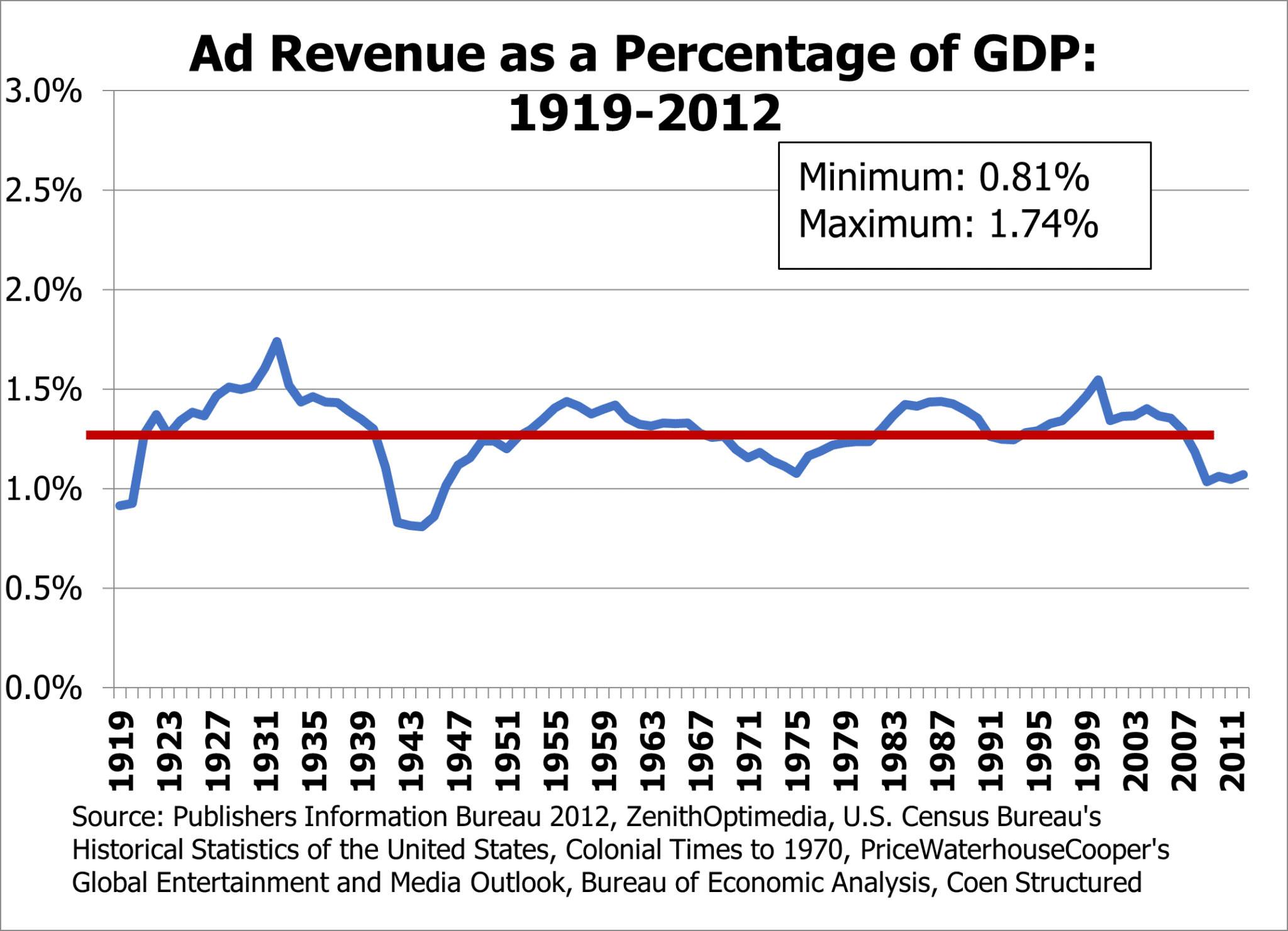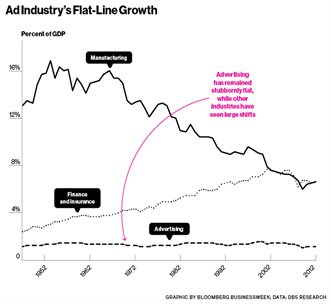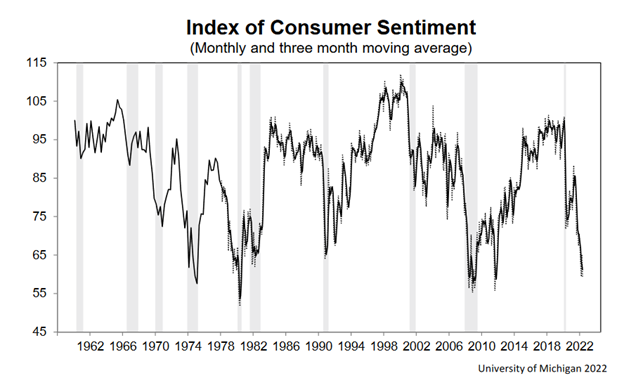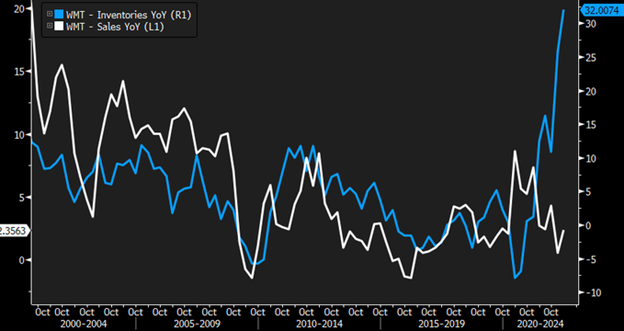“…the macro environment has deteriorated further and faster than we anticipated when we issued our quarterly guidance last month.” -Snap CEO Evan Spiegel
First-quarter 2022 GDP fell by 1.4%. Many economists and Fed members foresaw the economy slowing from its robust 6.9% pace in the fourth quarter of 2021, but few predicted an economic contraction.
Despite the poor start to the year, many economists are optimistic about second-quarter growth. The graph below shows the consensus estimate for second-quarter GDP growth is 3%, and the Atlanta Fed GDPNow model expects 2.4% growth.
Following the first-quarter GDP, economist Ian Shepherdson, a frequent guest on CNBC, wrote, “the economy is not falling into a recession.”
We beg to differ with Ian and the “consensus.”
Recent warnings from corporate executives, like the one above, and rapidly declining regional manufacturing surveys and consumer sentiment make us wonder if a recession may have already started.
Snap Goes Advertising
In our Daily Commentary, we led with the following paragraph about Snap (NYSE:SNAP), aka Snapchat:
Snap’s stock fell over 40% in trading on Tuesday. Concerning us is not necessarily Snap stockholders or even the welfare of the company, but comments from its CEO. Snap’s CEO writes in a letter to its employees: “…the macro environment has deteriorated further and faster than we anticipated when we issued our quarterly guidance last month.”
Snap is a social media company deriving 99% of its revenue from advertising. Importantly, from a macro perspective, advertising expenditures tend to track well with the economy per the graph below.
Snap is just one company, and typically we would not read much into the warning. However, his comments about a “further and faster” decline in the economy are significant because of their timeliness and that advertising expenditures are strongly linked to economic activity.
it is becoming more evident by the day that many companies cannot entirely pass higher prices and expenses onto consumers. As such, they must cut or limit costs wherever possible. Advertising is an easy place to start, as Snap warns.
Plunging Consumer Sentiment
It is not just Snap and the advertising industry that troubles us. Personal consumption accounts for approximately two-thirds of economic activity. Accordingly, consumer sentiment, which is primarily a factor of the financial state of consumers, is an important indicator to follow.
The University of Michigan Consumer Sentiment Survey is near its all-time lows of the last 60 years, as shown below.
Gloomy Regional Manufacturing Surveys
Economic data from the government is often delayed by at least a month and sometimes a quarter. However, timelier data sources can help us bridge the gap until government data is released.
The prominence of manufacturing in the United States is not what it used to be, but it still strongly correlates with the economy. Helping us assess the state of manufacturing is a series of regional and national surveys.
Often the surveys are released within a week or two of when they were taken. Here are a few tidbits from our Daily Commentary on two such recent surveys.
- The May New York Fed Empire State Manufacturing Survey fell sharply into economic contraction levels at -11.6. Last month the Empire index stood at +24.6.
- The Philadelphia Fed Manufacturing Index, like the Empire State Index, came in well short of expectations. The index is now 2.6, down from 17.6 and expectations of 16.5. As shown below, the index still signals manufacturing expansion, but just barely so. The index fell to its lowest level in two years.
On May 24, 2022, the Richmond Fed Survey shrunk into contractionary economic territory at -9, versus a forecast of 10 and previous reading of 14. Per the report:
“Additionally, the local business conditions index continued its decline to -16 in May, from -10 in April. Firms are also less optimistic about conditions in the next six months as the index decreased to -13 in May from -1 in April.”
Many manufacturing executives surveyed already feel the brunt of weakening economic activity and pushback from retailers.
Stocks, Bonds, And The Fed
Bond yields have fallen over the last two weeks. Bond investors and traders are breathing a sigh of relief as increasing recession odds should weigh on inflation.
Weakening growth and lower inflation should result in lower bond yields. However, the risk is that inflation does not materially weaken with the economy, yet the Fed becomes less hawkish. If so, bond traders might rightfully fear the Fed is not fighting inflation enough.
Stock investors would love to see the Fed relent from its hawkish rhetoric. However, unlike bond investors, they are not enthused about a possible recession.
Pressure will likely remain on stock prices until the Fed relents. If they ease back on the hawkish rhetoric, we must wonder if stock investors will worry the Fed is being too easy on inflation.
Unless there is a steep drop in inflation in the coming months, the Fed runs the risk of reacting to weak economic growth at the expense of taming inflation.
Summary
We would not rule out an announcement later this year by the National Bureau of Economic Research (NBER) backdating an official recession start date to May or even April.
Despite the data and commentary, many economists still discount the possibility of a recession. With one month left in the quarter, there is plenty of time for a resurgence in economic activity.
That said, real-time data, including sentiment, corporate earnings, and manufacturing surveys, point to a rapidly slowing economy.
While others wait for more official government economic data, we prefer to consider how quickly weakening economic activity and possibly lower inflation will change Fed rhetoric and ultimately affect our portfolios.
- English (UK)
- English (India)
- English (Canada)
- English (Australia)
- English (South Africa)
- English (Philippines)
- English (Nigeria)
- Deutsch
- Español (España)
- Español (México)
- Français
- Italiano
- Nederlands
- Português (Portugal)
- Polski
- Português (Brasil)
- Русский
- Türkçe
- العربية
- Ελληνικά
- Svenska
- Suomi
- עברית
- 日本語
- 한국어
- 简体中文
- 繁體中文
- Bahasa Indonesia
- Bahasa Melayu
- ไทย
- Tiếng Việt
- हिंदी
Snap Goes The Economy
Published 05/25/2022, 12:12 PM
Updated 07/09/2023, 06:31 AM
Snap Goes The Economy
3rd party Ad. Not an offer or recommendation by Investing.com. See disclosure here or
remove ads
.
Latest comments
Thanks
Install Our App
Risk Disclosure: Trading in financial instruments and/or cryptocurrencies involves high risks including the risk of losing some, or all, of your investment amount, and may not be suitable for all investors. Prices of cryptocurrencies are extremely volatile and may be affected by external factors such as financial, regulatory or political events. Trading on margin increases the financial risks.
Before deciding to trade in financial instrument or cryptocurrencies you should be fully informed of the risks and costs associated with trading the financial markets, carefully consider your investment objectives, level of experience, and risk appetite, and seek professional advice where needed.
Fusion Media would like to remind you that the data contained in this website is not necessarily real-time nor accurate. The data and prices on the website are not necessarily provided by any market or exchange, but may be provided by market makers, and so prices may not be accurate and may differ from the actual price at any given market, meaning prices are indicative and not appropriate for trading purposes. Fusion Media and any provider of the data contained in this website will not accept liability for any loss or damage as a result of your trading, or your reliance on the information contained within this website.
It is prohibited to use, store, reproduce, display, modify, transmit or distribute the data contained in this website without the explicit prior written permission of Fusion Media and/or the data provider. All intellectual property rights are reserved by the providers and/or the exchange providing the data contained in this website.
Fusion Media may be compensated by the advertisers that appear on the website, based on your interaction with the advertisements or advertisers.
Before deciding to trade in financial instrument or cryptocurrencies you should be fully informed of the risks and costs associated with trading the financial markets, carefully consider your investment objectives, level of experience, and risk appetite, and seek professional advice where needed.
Fusion Media would like to remind you that the data contained in this website is not necessarily real-time nor accurate. The data and prices on the website are not necessarily provided by any market or exchange, but may be provided by market makers, and so prices may not be accurate and may differ from the actual price at any given market, meaning prices are indicative and not appropriate for trading purposes. Fusion Media and any provider of the data contained in this website will not accept liability for any loss or damage as a result of your trading, or your reliance on the information contained within this website.
It is prohibited to use, store, reproduce, display, modify, transmit or distribute the data contained in this website without the explicit prior written permission of Fusion Media and/or the data provider. All intellectual property rights are reserved by the providers and/or the exchange providing the data contained in this website.
Fusion Media may be compensated by the advertisers that appear on the website, based on your interaction with the advertisements or advertisers.
© 2007-2024 - Fusion Media Limited. All Rights Reserved.





